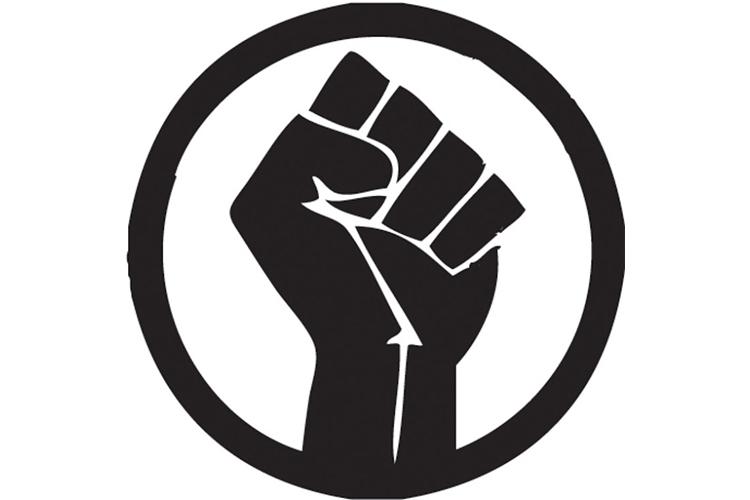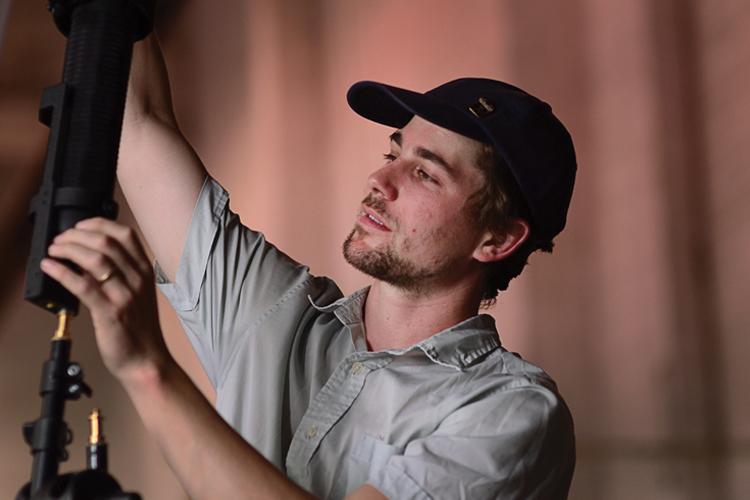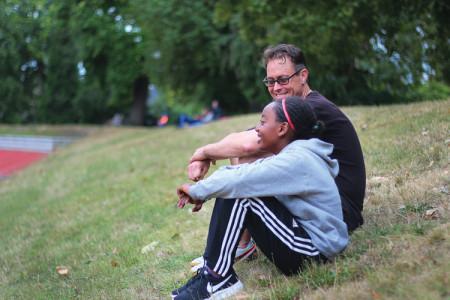
I remember when the voice of the Black Lives Matter movement began. It was in 2012, after neighborhood watch member George Zimmerman shot and killed Trayvon Martin in Florida and was acquitted of the crime.
The movement gained momentum a few years later, sparked by police – the bedrock of law enforcement – killing a number of black people with illogical regularity. In each case the victims were black and posed no threat.
In July 2014, Eric Garner was choked to death by New York City police while he gasped the words, “I can’t breathe.” His alleged crime? Selling single cigarettes on the street.
A month later, a Ferguson, Mo. police officer shot Michael Brown to death after an altercation left the victim lying dead on a street for hours. An ambulance was never called.
In November, Cleveland police shot 12-year-old Tamir Rice to death within two seconds of arriving to the scene. Rice was playing with a toy gun in a park.
When I heard about these incidents, they each took their toll on my perception of police. Surely, I believed, the slaying of these black people would spark immediate change.
But what’s happened since has been a series of similar incidents that left several more African Americans dead at the hands of law enforcement. The most notable cases – less than 24 hours apart – resulted in the deaths of Alton Sterling in Baton Rouge and Philando Castile in suburban St. Paul, Minn.
What followed was a boiling over point of sorts: police in Dallas and Baton Rouge were targeted and shot to death by black men.
In both cases, police believe the shooters resorted to violence to send a message. Dr. Roberta Hunte, an assistant professor of Black Studies at Portland State University, says the shootings are a reflection of outrage and the failure of the justice system to hold its personnel accountable and address discontent with past and current violence.
“Police perpetuate a type of violence within communities,” says Hunte. “If you’re not going to get justice outside, then people tend to try to take justice into their own hands. It’s not surprising and it’s heartbreaking.”
Violence toward African Americans – especially coming from law enforcement – is nothing new. The legacy of black oppression has roots dating back to slavery. When a person owned slaves, they could do whatever they wanted with them. Beating, raping or murdering them were all within legal bounds.
Black deaths continued, most notably during the Civil Rights era.
In 1962, a black military officer, Cpl. Roman Ducksworth, was shot to death by police in Taylorsville, Miss. He was headed home by bus from Maryland and had been sleeping when police ordered him to get out of the vehicle. The policeman who shot him claimed he was defending himself and was cleared.
In 1964, James Chaney, a black man, and two white Civil Rights colleagues with the Congress of Racial Equality were working in Mississippi to register black voters. They were stopped for a traffic violation and released. But local police later abducted the men and handed them over to the Ku Klux Klan. They were found buried in an earthen dam with gunshot wounds to the head.
In 1965, Jimmie Lee Jackson was shot to death by a state trooper while trying to protect his grandfather and mother. Three years later, police gunned down three black students at South Carolina State College during a demonstration.
Even today, while blacks make up about 12 percent of the U.S. population, according to statistics from the Federal Department of Justice, they represent more than 37 percent of the prison population. But this isn’t because blacks commit crimes at higher rates. Rather, the justice system targets African Americans for arrest, convicts them at higher rates and gives them harsher jail sentences, according to a report by the Sentencing Project for the United Nations’ Human Rights Committee.

Now consider this: In early August, a white, self-proclaimed Constitutionalist who had been stalking Portland police was arrested without incident, even though as the authorities approached his car they said he “appeared to be reaching around inside his vehicle.” The police found four guns in his car but he was not shot.
About the same time, a white cop in Ohio showed up at his ex-wife’s house with his gun drawn, fled, then returned and shot the detective who was there to interview the woman. This resulted in a standoff with police that ended with his arrest. He was not harmed.
As the Black Lives Matter movement continues to grow, it’s come under fire from critics who chide it with slogans such as “All Lives Matter” and, after the recent shootings of police in Dallas and Baton Rouge, “Blue Lives Matter.”
Those critics miss the point. The Black Lives Matter movement and the two men who killed police in Dallas and Baton Rouge represent two very different societal reactions to police oppression. One reaction is peaceful and productive, the other violent and fruitless.
I’m not advocating for the use of violence, whether it is committed by police or toward them. Personally, it’s painful to watch this country continue to divide itself over these issues. If you care about injustices, then you care about the same things that Black Lives Matter supporters do.
Let me ask everyone to ponder this: Why are we spending time getting tripped up over the phrasing used by a movement rather than coming together and standing united against injustices? ◊





































